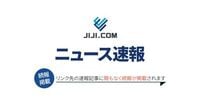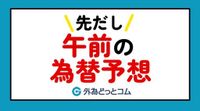On May 1, 2025, the dollar-yen exchange rate in Tokyo morning trading edged up to nearly 143.24 yen as traders anticipated the Bank of Japan's (BOJ) monetary policy announcement. The trend of yen selling and dollar buying was slightly dominant ahead of the announcement, reflecting growing global economic uncertainty amid the ongoing U.S.-China trade war.
As the market awaited the BOJ's decision, the euro-yen was trading slightly lower in the latter half of 161 yen, and the pound-yen hovered around 190.5 yen. Meanwhile, the Australian dollar-yen showed strength, trading near 91.87 yen.
The BOJ had previously decided on additional interest rate hikes during its January monetary policy meeting and indicated further hikes were possible in March. However, this hawkish sentiment appears to have shifted significantly since April. Short-term interest rates, particularly the 2-year bond yield, have sharply declined, indicating that market expectations of the BOJ's aggressive stance on interest rates have changed.
This decline in bond yields coincided with President Trump's announcement of mutual tariff policies and a resulting global stock sell-off, which has raised concerns about capital outflows from the U.S. Known as "U.S. selling," this phenomenon may alter the outlook for future BOJ interest rate hikes, pushing the bank towards a more cautious approach.
Naoya Hasegawa, chief bond strategist at Okasan Securities, noted that the BOJ is expected to lower its economic growth forecast in its upcoming outlook report and delay the target achievement period for its 2% inflation goal. Hasegawa believes that BOJ Governor Kazuo Ueda will soften his hawkish tone during the press conference, which could further influence market sentiment.
In a Bloomberg survey conducted from April 16 to April 22, all economists predicted that the BOJ would maintain its current policy at the May meeting. Attention is now focused on the economic and inflation outlook and risks mentioned in the report, especially in light of the pressures stemming from Trump's tariffs.
The dollar-yen exchange rate's recent fluctuations reflect broader economic concerns. On April 30, the dollar/yen pair rose approximately 0.5% based on the closing value. The pair initially moved around the first half of the 142 yen range, awaiting new catalysts. However, as European trading commenced, rising stock indices in Germany and the UK helped the pair recover to the 143 yen level.
Entering NY trading on April 30, weaker-than-expected U.S. ADP national employment figures for April and the preliminary U.S. GDP results for the January-March quarter pushed the pair down to the mid-142 yen range. Nevertheless, reports from Chinese media indicating that the U.S. is moving towards improving U.S.-China trade tensions led to a recovery, with the pair extending gains to around 143.19 yen.
Amid these developments, the BOJ is largely expected to maintain its policy interest rate at 0.50% during today's monetary policy meeting, a decision already priced into the market. The simultaneous release of the outlook report is expected to show a downward revision of the growth rate forecast due to the impact of U.S. tariff policies.
Concerns are growing that the BOJ's pace of interest rate hikes may be slower than previously anticipated as it assesses the impact of U.S. tariffs on the Japanese economy. The negative effects of these tariffs are already evident in the U.S. economy, as reflected in the recent GDP results.
In addition to the BOJ's monetary policy, Japan's currency authorities, including the Ministry of Finance, have shown heightened sensitivity to factors that could lead to a weaker U.S. dollar and a stronger yen. Finance Minister Kato recently stated that there was no request from the U.S. for specific currency targets during the recent Japan-U.S. Finance Ministers' meeting. However, the Ministry of Finance strongly denied reports suggesting that Treasury Secretary Bessent favored a weaker U.S. dollar and a stronger yen.
These developments highlight the extent to which Japan's monetary policy and currency strategy may be influenced by the actions of the Trump administration. The BOJ's priority remains to avoid a resurgence of "U.S. selling," especially as the second U.S.-Japan tariff consultation is scheduled for today.
As the situation unfolds, market participants are closely monitoring the BOJ's statements and the implications for future monetary policy. The bond market's cautious stance reflects uncertainty about the trajectory of interest rates in Japan and the potential effects of global economic trends.
In summary, the dollar-yen exchange rate's movement on May 1, 2025, reflects a complex interplay of domestic monetary policy decisions and external economic pressures. With the BOJ's upcoming announcements and the ongoing U.S.-China trade tensions, the financial landscape remains dynamic and uncertain.






